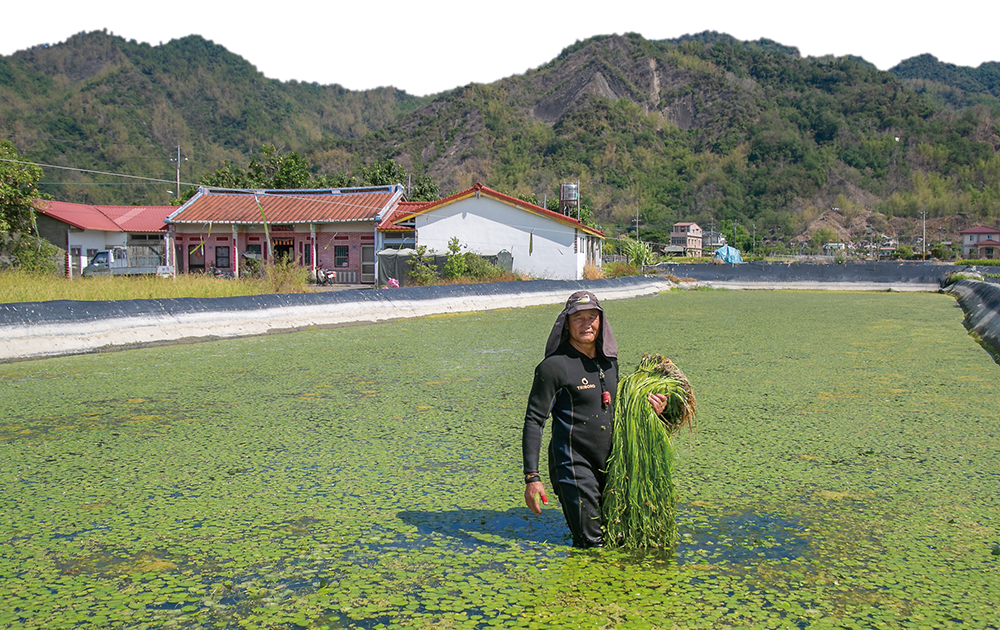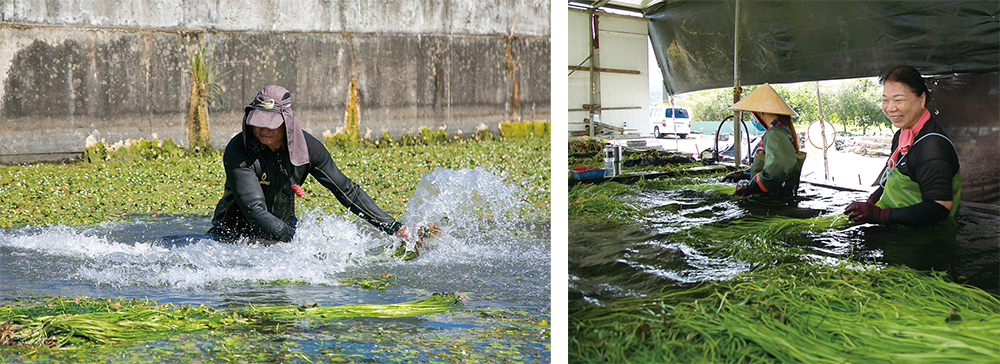Meinong's Wild Lotus
◎Written by Huang Da-wei
◎English translation by Hou Ya-ting
◎Photos by Huang Jing-wen
◎Photos courtesy of Meinong District Farmers' Association

Meinong District is a charming countryside Hakka township. Its vibrant Hakka culture and picturesque mountainous landscape make it a fascinating destination for travelers. There are many interesting aspects of Hakka culture that can be experienced, such as taking a tour of the red-brick sanhe yuans (traditional three-section compound homes) or check out the artistic handmade umbrella workshops. Another interesting activity is learning how to harvest wild lotus. In mandarin wild lotus is pronounced yelian and are aquatically cultivated around Meinong as a regional agricultural crop.
Wild lotus first appeared around Meinong Lake (another popular sightseeing spot in Meinong District). Generations ago, the kids used to swim in the lake; however, these days since clean water is essential for cultivating wild lotus, it is used in supplying water to Meinong's numerous wild lotus ponds that cover approximately 1,000 hectares and produce 90% of Taiwan's wild lotuses.
In Meinong, wild lotus is cultivated year-round, with harvests three times a year. The stem can exceed 90 centimeters and is generally the only part that is used in regional dishes. Harvesting the wild lotus is extremely hard work. The farmers must wear wetsuits and work on both humid and hot days along with chilly winter days. They submerge themselves neck deep, while diving down into the water to pull up the lotus out by its roots.
Li Huan-sheng is a wild lotus farmer and a native of Meinong. He welcomes visitors to come and experience the wild lotus harvest. On Sundays, people make appointments to come out and put on the wetsuits while they experience what it is like to harvest these aquatic vegetables. Mr. Li stipulates that due to safety reasons visitors would need at least 15 years old and tall enough to navigate waters that are usually about 90 centimeters deep. Appointments must be made in advance, and visitors must follow the instructions that are strictly set out in order to protect visitors' safety. Mr. Li teaches how to pick, wash, sort and package the crops. He says many who have experienced harvesting the wild lotus have gained a sincere appreciation for what these farmers do.

In Meinong, residents generally use only the stem in their local cuisine. One popular wild lotus dish is a stir-fry that is cooked over a high heat, in which the stem has a watery, crunchy texture and a unique flavor that visitors seem to enjoy. However, since only the stem is consumed the rest of the wild lotus goes to waste. Five years ago, the Meinong District Farmers' Association appointed the Industrial Technology Research Institute to research other value-added products that be created from these crops. They found that the wild lotus could be converted into small chunks and powders that could be used in baked goods. They have also developed wild lotus skin care products, such as skin toner and facial masks, which can be purchased at Meinong District Farmers' Association.
| |
|
Li's Wild Lotus |
| |
|
FB: 李氏野蓮家
Address: No. 81, Huanhu Rd., Meinong District, Kaohsiung City
Note: Since the coronavirus outbreak, Li's Wild Lotus workshops have had to be put on hold and will resume again when the government deems it to be safe.
|